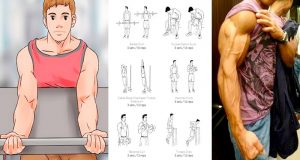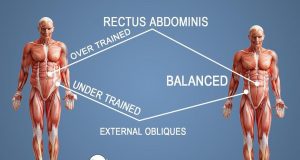The instinctive training principle has been around for decades but the full impact of what it can accomplish has eluded the average trainer, leaving them in confusion and believing there is something mysterious and secret about it. The fact is they use it every day and probably don’t even realize it. This principle has everything to do with being in tune with your body, not some mystical spiritual voodoo, but being able to decipher how your body feels in a given moment.
A few examples are feeling tired near bedtime, feeling as if you are coming down with a cold or flu due to fatigue and achy joints, or feeling like you are getting thirsty. These are obvious cases of your body trying to communicate its needs to you and by recognizing these physical feelings you are able to give your body what it needs when it needs it to stay in balance. The instinctive training principle is an in depth ability to read even the most subtle nuances in body function fluctuations as they pertain to exercise stimulus and diet to get accurate feedback on the effectiveness of a given training program, exercise, intensity level, workout length, number of sets and reps, etc.
Mastering this technique can speed your progress and save many months or years of wasted guesswork using cookie cutter training programs or mimicking what you see others doing in the gym without really knowing if it is right for you. It does take some time to be fully able to trust your instincts and read your body correctly because the body has its own agenda when it comes to expending energy, that of being self sparing.
For instance when you hit the gym for a leg workout, as the time approaches you start getting butterflies in your stomach and your energy seems to wane, you have to be able to distinguish between real fatigue and anxiety over the intensity of effort to come because if you push through when you are actually still tired from the last workout you are flirting with over training and backsliding in progress and if you misread the dread you feel as fatigue you will skip the workout and the next because the body will keep playing this hand to spare itself the stress.
Another example is using exercises in your routine that are favorites without regard to how they feel or whether they produce results, this usually stems from ego, convenience, or comfort, exercises such as flat bench press, barbell curl, leg press, etc. Bench press being more macho than incline dumbbell press, leg press being more comfortable than barbell squats, barbell curls being more convenient than seated incline dumbbell curls. To make real progress you must question your motives, monitor the results of a given exercise or routine and be able to throw out an old favorite to be replaced with one you don’t like if that is what the body responds to or rearrange the order of exercises or body parts to be worked in a given workout if a muscle group is lacking without regard to which body parts you enjoy training.
Pay careful attention to how different set and rep schemes affect your energy and mood levels, notice the difference in how your muscles feel and respond between exercises like pull downs feel compared to chins or barbell squats verses hack squats, nuances in grips, angles of pull, hand and foot placements, body positioning to be able to gauge their effectiveness to ensure the most productive use of your time and effort.
This going by how you feel can get out of hand if you approach every workout with whatever whim strikes you because there still must be structure, consistency, and rational thought in your approach. It is a balancing act that can change with time as you get to know your body better and it is a process that keeps evolving for as long as you train, so start now to master this indispensable tool that can make the difference between failing or attaining your physical goals.
 Crossfit Blogger News, Information and Bestselling Products
Crossfit Blogger News, Information and Bestselling Products




